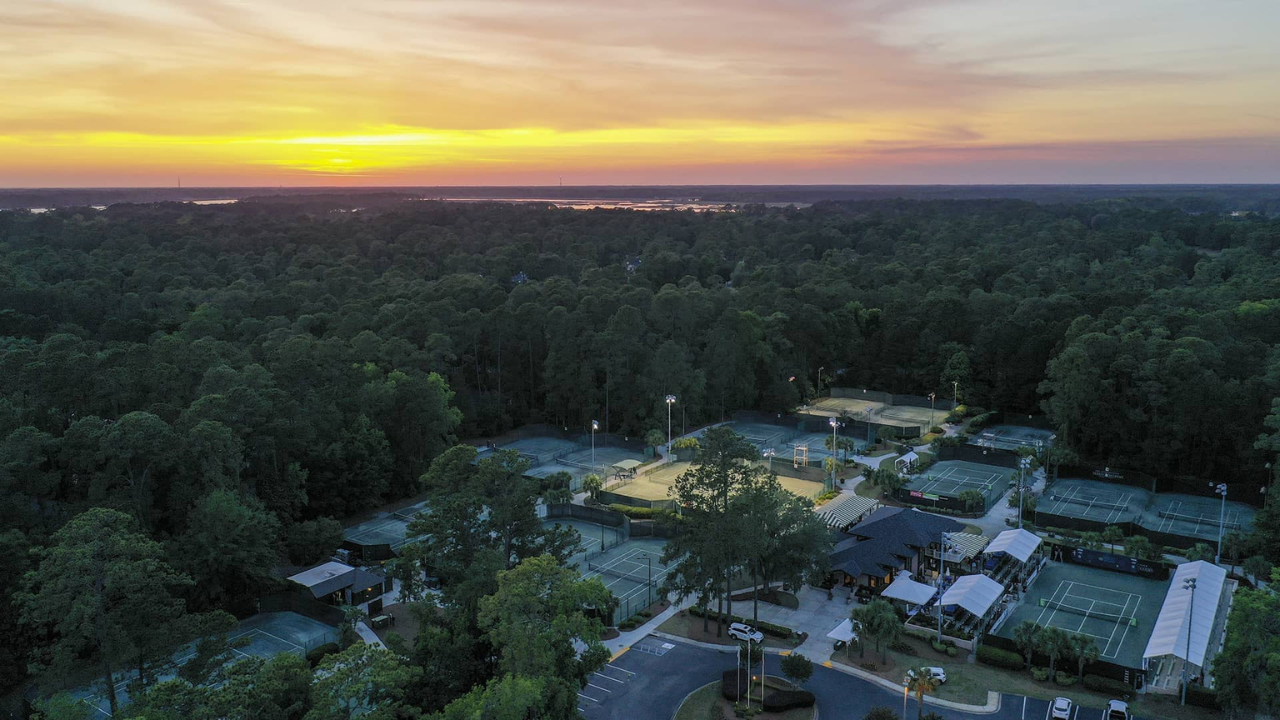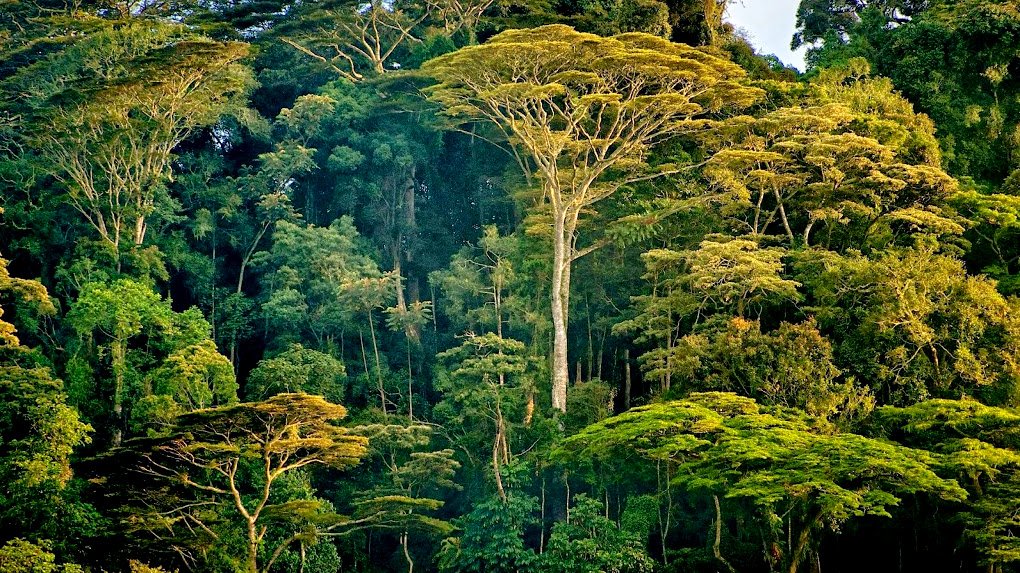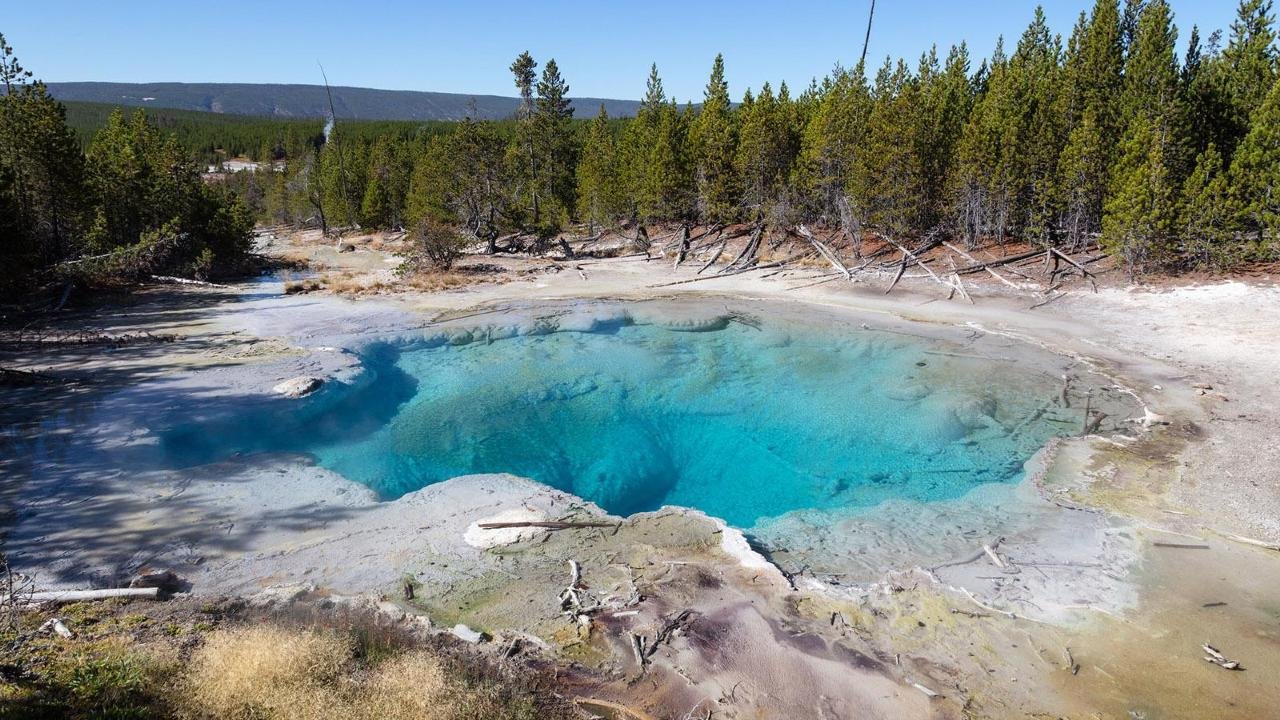In September 2023, the National Public Parks Tennis Championships returned to St. Louis, Missouri, marking a century since its inception in 1923. Hosted at the Dwight Davis Tennis Center in Forest Park, this milestone event not only celebrated a sporting legacy but also rekindled the memory of Dwight F. Davis—a St. Louis native whose vision transformed public parks into vibrant spaces for recreation and community. As the tournament unfolded amid Forest Park’s lush greenery, it offered a moment to reflect on Davis’s enduring impact, the intersection of sport and nature, and the broader implications for forest conservation and education. This article delves into the tournament’s return, Davis’s legacy, and how Forest Park continues to embody a harmonious blend of human activity and natural preservation, touching on themes like forest flora education, tree identification, and seasonal flora changes.
A Century of Tennis in Forest Park
The National Public Parks Tennis Championships, founded by Dwight Davis in 1923, were born from a simple yet revolutionary idea: to make tennis accessible to all through public parks. The inaugural event took place in St. Louis, and its 100th anniversary in 2023 brought the tournament back to its roots at the Dwight Davis Tennis Center. From September 14-17, players of all ages—juniors, adults, and college athletes—competed across 18 lighted courts, with additional wheelchair and adaptive exhibitions showcasing inclusivity. The centennial celebration included a party, live music, and a nod to the tournament’s history, drawing participants and spectators from across the United States.
Forest Park, spanning 1,300 acres and larger than New York’s Central Park, provided a fitting backdrop. Officially opened in 1876, it’s a tapestry of natural beauty and cultural landmarks—home to a zoo, museums, and sprawling woodlands. The tennis center, named after Davis, stands as a testament to his commitment to public recreation, its courts nestled among trees that whisper tales of seasonal flora changes and rare forest flora. The event’s return in 2023 wasn’t just a sporting triumph; it was a celebration of a legacy intertwined with the park’s ecological and communal significance.
Dwight Davis: The Man Behind the Legacy
Born in 1879 in St. Louis, Dwight Filley Davis was more than a tennis champion—he was a visionary. A three-time national doubles champion (1899-1901) and the donor of the Davis Cup, he saw tennis as a unifying force. As St. Louis Parks Commissioner from 1912 to 1915, Davis transformed Forest Park by installing its first public tennis courts in 1912—32 at the time, now 18—and famously removed “Keep Off the Grass” signs. His philosophy was clear: parks were for people, not just preservation. “If we can’t have the grass and the people in our parks, let’s sacrifice the grass,” he declared, prioritizing human engagement over pristine lawns.
Davis’s influence extended beyond St. Louis. As the founder of the National Public Parks Tennis Association, he envisioned a network of municipal leagues fostering inter-city and national competition. His efforts democratized tennis, making it a sport for the masses rather than an elite pastime. The Dwight Davis Tennis Center, renovated in 1966 from the original Jefferson Memorial courts, honors this legacy with state-of-the-art facilities—resurfaced in 2021 with U.S. Open colors—and a mission to serve diverse communities. Recognized as the Public Tennis Facility of the Year in 2024 by Racquet Sports Industry magazine, it continues to embody Davis’s ethos of accessibility and excellence.
Forest Park: A Living Classroom
The tournament’s return to Forest Park highlighted more than tennis; it underscored the park’s role as a nexus of nature and culture. With its woodlands, wetlands, and prairies, Forest Park is a living classroom for forest flora education and tree identification. The park’s diverse tree species—oaks, maples, sycamores, and more—offer a natural laboratory for observing seasonal flora changes. In September, as the championships unfolded, the leaves were poised on the cusp of autumn, their green hues soon to yield to gold and crimson, a reminder of nature’s cyclical beauty.
This ecological richness ties into Davis’s legacy. His push for public access didn’t sacrifice the park’s natural integrity; rather, it fostered a symbiotic relationship between people and place. Forest Park Forever, a nonprofit conservancy founded in 1986, partners with the City of St. Louis to maintain this balance, ensuring the park’s flora and fauna thrive alongside recreational spaces. The tennis center, surrounded by towering trees, exemplifies how human activity can coexist with forest conservation efforts, preserving habitats for wildlife and rare plants while inviting exploration.
Tennis and the Natural World
The National Public Parks Tennis Championships’ return sparked a broader conversation about sport’s role in environmental stewardship. Tennis courts, carved into the park’s landscape, are a human imprint, yet they sit within a larger ecosystem. The event’s timing in late summer aligned with the park’s seasonal flora changes, offering players and spectators a chance to witness nature’s transition. For those attuned to forest flora basics, the surrounding trees—some potentially medicinal or rare—added depth to the experience, blending athleticism with ecological awareness.
Davis’s original courts were built with minimal disruption to the park’s natural features, a foresight that resonates with modern conservation principles. Today, the tennis center’s operations reflect this ethos, with initiatives like hosting free clinics for underserved youth and adaptive sports events, ensuring the park remains a communal asset. The 2023 tournament’s inclusivity—welcoming wheelchair players and juniors—mirrored the biodiversity of Forest Park itself, where diverse species and communities coexist.
Implications for Forest Conservation
The tournament’s centennial spotlighted forest conservation in an urban context. Forest Park’s woodlands, part of the Mississippi River flyway, support migratory birds and native flora, some of which are rare or endangered. The park’s management balances these ecological needs with public use, a challenge Davis navigated a century ago. His removal of restrictive signs foreshadowed today’s emphasis on accessible green spaces, which research shows boosts mental health and community cohesion—key aspects of fitness and wellness.
The China-Brazil joint commitment to end illegal deforestation, announced in 2023, offers a global parallel. While focused on trade, it underscores the importance of protecting forests like the Amazon, whose health indirectly influences ecosystems like Forest Park’s. Brazil’s Biodiversity Law (2015), with its benefits-sharing framework, further aligns with this narrative, empowering communities to conserve biodiversity—a principle Davis championed by empowering St. Louisans through recreation. The tournament’s return thus served as a microcosm of how local actions can reflect global conservation goals.
Educating Through Nature and Sport
Forest Park’s role as an educational hub extends to the tennis center. For visitors, the surrounding flora offers lessons in tree identification—distinguishing a red oak from a sugar maple—or understanding medicinal plants like the native elderberry, historically used by indigenous peoples. The tournament provided an informal setting for such education, with spectators potentially pausing to admire a sycamore’s mottled bark or a pawpaw’s fruit, a rare understory tree in Missouri’s forests.
Davis’s legacy amplifies this educational potential. His tournaments were designed to “raise men and women rather than grass or trees,” yet they inadvertently fostered appreciation for the natural settings they occupied. Today, programs at the Dwight Davis Tennis Center—like summer NIKE Tennis Camps—could integrate forest flora education, teaching kids not just forehands but also the ecological roles of the trees shading their courts. This blend of sport and nature aligns with forest flora basics, encouraging a holistic understanding of the environment.
A Legacy in Bloom
The 2023 tournament wasn’t just a sporting event; it was a celebration of continuity. Theodore R. “Ted” Drewes, a St. Louis tennis star who won the singles title from 1924 to 1927, followed Davis’s footsteps, reinforcing the city’s tennis heritage. Today, the center hosts marquee events—USTA junior tournaments, collegiate matches, and even pickleball championships—while remaining open to all, a nod to Davis’s democratic vision. Its 2024 national recognition underscores its vitality, a century after Davis’s founding efforts.
This legacy blooms alongside Forest Park’s flora. The park’s trees, some over a century old, stand as silent witnesses to Davis’s era and the tournament’s evolution. Their seasonal changes—spring blossoms, summer canopies, fall colors—mirror the cycles of athletic achievement, each generation building on the last. For rare and endangered flora, like the Missouri bladderpod, the park’s conservation efforts ensure survival, much as Davis ensured tennis’s survival in public spaces.
Challenges and Opportunities
Maintaining this dual legacy—of sport and nature—presents challenges. Urban pressures, climate change, and funding constraints test Forest Park’s resilience. The tennis center, a nonprofit reliant on grants and donations, faces similar hurdles, yet its 2021 management shift to USTA St. Louis and recent upgrades signal resilience. Opportunities abound: integrating conservation education into tournaments, promoting ecotourism (think guided tree identification walks), or leveraging events to fund habitat restoration could deepen the park’s impact.
Globally, Brazil’s benefits-sharing model offers inspiration. Just as its law channels biodiversity profits to communities, Forest Park could channel tennis revenue into flora preservation, enhancing habitats for wildlife and medicinal plants. Davis’s vision of parks as communal assets could evolve into a modern blueprint for sustainability, blending recreation with ecological stewardship.
Conclusion
The National Public Parks Tennis Championships’ return to Forest Park in 2023 was more than a centennial celebration—it was a reaffirmation of Dwight Davis’s legacy. His belief in parks as spaces for people resonates today, as the Dwight Davis Tennis Center thrives amid Forest Park’s woodlands, a testament to sport’s power to unite and inspire. Beyond the courts, the park’s flora—its trees, rare plants, and seasonal shifts—enriches this narrative, offering lessons in conservation and connection. As of March 31, 2025, this event’s echo lingers, urging us to honor Davis by nurturing both our communities and the natural world they inhabit. What will the next century of tennis in Forest Park bring? The answer lies in the seeds—literal and figurative—planted today.
-
Tips for Navigating the Park During the Great Forest Park Balloon Race

The Great Forest Park Balloon Race, held annually in St. Louis, Missouri, transforms the sprawling 1,300-acre Forest Park into a vibrant hub of activity, drawing over 100,000 spectators to witness a sky filled with colorful hot air balloons. Scheduled for September 20-21, 2025, this free, family-friendly event—featuring the Balloon Glow on Friday and the Race…
-
National Tennis Tournament’s Return to Forest Park Recalls Dwight Davis Legacy

In September 2023, the National Public Parks Tennis Championships returned to St. Louis, Missouri, marking a century since its inception in 1923. Hosted at the Dwight Davis Tennis Center in Forest Park, this milestone event not only celebrated a sporting legacy but also rekindled the memory of Dwight F. Davis—a St. Louis native whose vision…
-
Be the Heart of the Park: Support Forest Park Today

Forest Park stands as a living testament to the power of nature—a sprawling sanctuary where towering trees, delicate wildflowers, and winding trails invite us to pause, breathe, and connect. For generations, this cherished woodland has been more than just a green space; it’s a vital ecosystem, a classroom for discovery, and a source of solace.…
-
Removing Invasive Plant Species Helps Restore Kennedy Forest

Nestled in the heart of a vibrant ecosystem, Kennedy Forest stands as a testament to nature’s resilience and beauty. For decades, this woodland has been a sanctuary for native flora, a classroom for ecological education, and a haven for biodiversity. However, like many forests worldwide, Kennedy Forest has faced a silent threat: invasive plant species.…
-
Prescribed Burn Season Until April 2025: A Vital Tool for Forest Health and Flora Preservation

Below is a professional, long-form article (approximately 2,000 words) about the Prescribed Burn Season until April 2025, written in English. The article incorporates the requested categories: Blog, Forest Conservation, Forest Flora Basics, Forest Flora Education, Medicinal Plants, Rare & Endangered Flora, Seasonal Flora Changes, and Tree Identification. It is designed to be informative, engaging, and…
-
The East Waterways Project: A Journey into Forest Conservation and Flora Preservation

Nestled along the winding rivers and sprawling wetlands of eastern England, the East Waterways Project emerges as a visionary initiative dedicated to safeguarding one of the region’s most precious resources: its forests and waterways. Launched in 2023, this ambitious undertaking unites ecologists, local communities, and policymakers in a shared mission to conserve forest ecosystems, educate…
-
Tips for Navigating the Park During the Great Forest Park Balloon Race

The Great Forest Park Balloon Race is one of the most anticipated events in St. Louis, drawing thousands of visitors to Forest Park each year. With vibrant hot air balloons lighting up the sky, live entertainment, food vendors, and family-friendly activities, it’s an experience you won’t want to miss. However, navigating the park during such a large event can…
-
Tune in to KMOV on Day 4 Forest Park: A Celebration of Nature and Community

Introduction Forest Park, one of the largest urban parks in the United States, is a treasure trove of natural beauty, recreational opportunities, and ecological significance. Spanning over 1,300 acres in the heart of St. Louis, Missouri, Forest Park is a haven for nature lovers, outdoor enthusiasts, and community members alike. On Day 4 of a…
-
Predicting Spring: The Human Way

Introduction Spring, the season of renewal and rebirth, has always held a special place in the human heart. As the snow melts and the first green shoots emerge, there is a palpable sense of anticipation and hope. But how do we predict the arrival of spring? While modern meteorology provides us with precise forecasts, humans…
-
Generations of Love for Forest Park: A Legacy of Conservation and Community

Introduction Nestled in the heart of the city, Forest Park stands as a verdant oasis, a testament to the enduring love and dedication of generations who have worked tirelessly to preserve its natural beauty. Spanning over 5,000 acres, Forest Park is not just a park; it is a living, breathing entity that has witnessed the…


